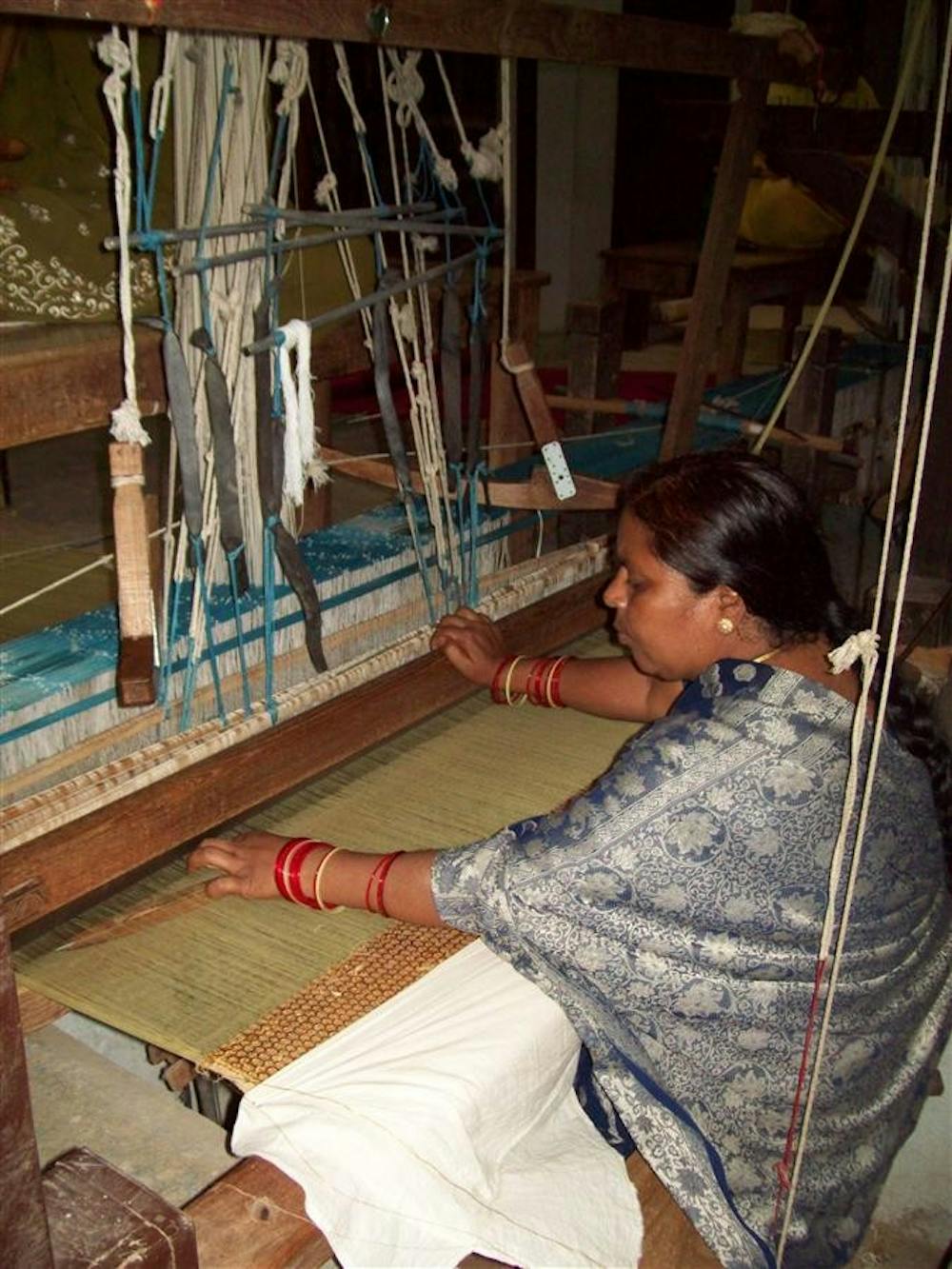HYDERABAD, India - Picture an elderly woman in a highly polluted city creating a certain haven for workers and school children.
This woman is Suraiya Hasan Bose. To say that I was impressed with this woman is an understatement. She is a testament to how much one person can do in a single lifespan and in old age, which doesn’t even show on her intelligent expression.
After just a few minutes of speaking with her, I was dumbfounded by her repertoire: freedom fighting with Gandhi, reconstructing and influencing the traditional art of weaving, teaching underprivileged children.
In addition to all of this, she tended a huge and lavish garden that seemed to connect all her enterprises.
At first, I went to see her looms, which are some of the last in existence. Since a globalized economy continues to force weavers from their looms and customers into import stores, there are very few left who know the art of weaving.
In fact, one of my professors informed me that the suicide rates among traditional weavers skyrocketed in recent years because very few people purchase their wares.
Bose has begun to reintroduce weaving via the help of one of the last experts in the field and the very last expert about many lost patterns, Syed Omar.
Together, they teach young widows a complex type of weaving called himru, which is local to India and being forgotten. In order to weave himru, one must have a jala, or graph, which is made through a series of strings tied to form the pattern. Every single thread must be hand woven to create the complex patterns these fabrics are known for.
This type of weaving was impressive.
I was in awe at how such a remarkable artform could die out. Bose then shared her hope that everyone would do their own weaving. It’s unrealistic now, she confessed, because modernization has taken over and there are very few who want to learn the complex art of weaving and making textiles locally.
Then she recounted a time during the freedom struggle when she along with others had started a bonfire in her house to burn foreign textiles as a form of protest against the British. All the men involved were arrested. This type of protest is why she wanted local wares.
She and Gandhi had shared this sentiment.
With the same fervor she used in her fight for social justice, she now teaches underprivileged children so they have a chance for further education. She teaches them everything from English to manners to art in order to make them well-rounded individuals.
To say the least, this woman is impressive.
I, for one, am fascinated to know what one of the freedom fighters is doing today to continue to make an impact on an ever-changing India.
Woman teaches art of weaving

Get stories like this in your inbox
Subscribe



